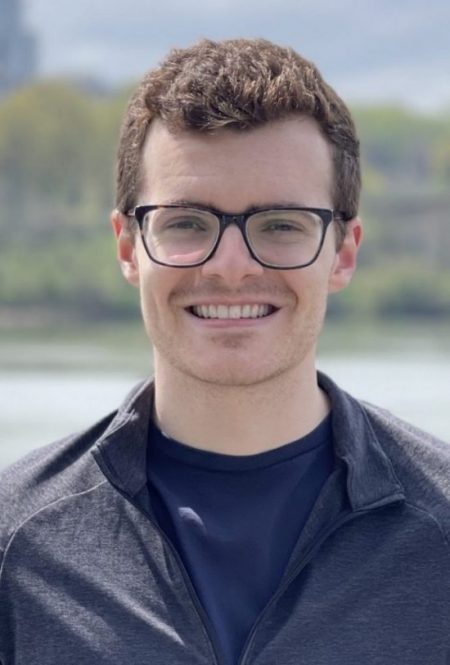
- This event has passed.
CBE PhD Dissertation Defense | “Understanding the relationship between clot contraction and platelet biology under hemodynamic conditions”
April 11, 2022 at 2:00 PM - 3:30 PM
Abstract:
“As thrombosis proceeds, platelets in a clot can expose phosphatidylserine (PS), providing a negatively charged surface for thrombin generation. These PS+ platelets have been shown to sort to the perimeter of platelet masses via platelet contraction. However, it remains unclear how thrombin and fibrin affect PS+ platelet sorting within a clot. We used an 8-channel microfluidic device to perfuse blood over collagen/TF to evaluate temporal and spatial PS+ platelet sorting. We found that thrombin inhibition, fibrin polymerization inhibition, or fibrinolysis each increased clot contraction and PS sorting. Fibrin attenuated clot contraction and PS sorting. Clots without fibrin had a 3.6-times greater contraction than clots with fibrin. Based on these results, we wanted to study contraction further. We tested the effect of inhibitors of ADP and/or thromboxane A2 (TXA2) signaling on clot contraction. We developed two automated imaging methods to score fluorescent platelet percent contraction: (1) “global” measurement of clot length, and (2) “local” changes in surface area coverage of platelet aggregates within the clot. Total platelet FI and global aggregate contraction were highly correlated (R2 =0.87). Local aggregate contraction was more pronounced than global aggregate contraction across all inhibition conditions. Conditions with TXA2 inhibition were shown to significantly reduce local aggregate contraction relative to conditions without TXA2, unlike conditions with ADP inhibition. Lastly, we recently obtained a glycoprotein VI (GPVI) inhibitor. GPVI is a collagen receptor on platelets that drives platelet activation; however, its role at later stages in clotting remains unclear. We tested the effect of anti-GPVI Fab on PS exposure, which occurs at later stages of platelet activation. On collagen/TF, Fab present at t=0s reduced PS exposure, but had no effect when added 30 or 90 seconds later. Thrombin generated via PS exposure had an important role in driving platelet deposition when Fab was present, since inhibition of PS via annexin V binding in the presence of Fab significantly inhibited platelet deposition. Our results from these studies help elucidate the relationship between platelet activation, PS exposure, fibrin, and clot contraction.“

Kevin Trigani
PhD Candidate, Department of Chemical and Biomolecular Engineering, University of Pennsylvania
Primary Advisor: Dr. Scott Diamond
